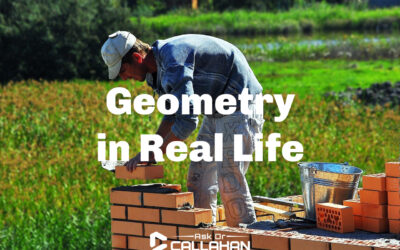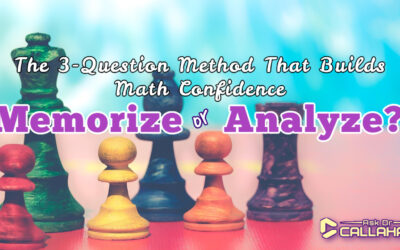Question from Teresa:
How do I explain how to answer 35 and 36 in chapter 3.4. My son is > working this independently of me. Looking at the answer book, is he to apply > what he has learned in the chapters to demonstrate the statements. Can you > eleboarate how he would approach a proof? I am at a loss.
Answer from Cassidy Cash:
Proofs often cause problems because they are way more broken down than what most people take the time to actually say. For instance, If I were to tell you to tell me WHY 2 + 2 = 4, you might be at a loss to explain that. “It just is” you might say, “that’s what 2 and 2 IS”. But a math book is looking for you to say “that is the rule of addition; if you add 2 and 2, the result is 4”
This same type of being very direct, very—almost simplistic and patronizing in the way a proof actually defines every single step— But when you are approaching these problems the key here is to remember that they ARE asking for every single step to be defined.
In number 34, They start by giving you a statement, which they put the words “by hypothesis” after the given statements, but you should just read that as “Given”, meaning “you don’t have to do anything to this step”, the word “given” or “by hypothesis” already defines those steps. After the given step of “AB = CD”, They say “AB + BC = BC + CD” and ask you to tell why. All that “why” means is that they want you to tell them what math property is happening here to make that statement true. If it is hard to see right away what math property you are dealing with, you can try replacing these letters with numbers, to make it clearer.
For instance, If we say AB = 6 and CD = 6, then we know that 6 = 6 So then If BC = 4, Then we can add 4 to both sides of “6=6” and we will have 6 + 4 = 4 + 6 Which with letters is the “AB + BC = BC + CD” they are asking us to explain. But when we have 6 + 4 = 4 + 6 It is easier to see that this statement is true because that is addition. If I add something to both sides of an equation (which remember “equation” just means “contains an equal sign”), then we are not changing the value of that equation. The rule of addition is the reason that step is true. So “addition” is all you need to write there.
The next step they ask about says “AB + BC = AC and BC + CD = BC” which is the “between-ness of points theorem” which is covered on page 86, and if you flip back there and look at that, you will see that it is pretty straightforward since they are even using the same letters here as they did on pg. 86, so it is fairly easy to pick out what they are looking for there. (granted you may have to do some searching, but actually page 741 lists all the postulates and theorems that are covered in the text all in one place, so you can flip there and search when you need to and it is a little easier).
Then the final step is just substitution because we already said that “AB + BC ” is the same thing as “BC + CD”, so then since AB + BC = AC and BC + CD = BC, then it only makes sense that AC = BC See how that works? Try number 35 and write me back if you need some more help. (Don’t forget to compare with the solutions manual if you get stuck)






